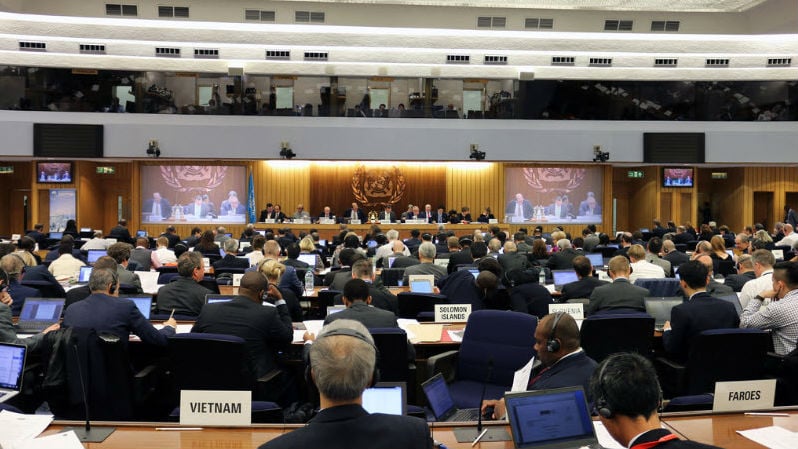MEPC Delays Ballast Water Treatment Decisions

As the entry into force of the Ballast Water Management Convention is set for the September 8, 2017, the topics on the agenda for the MEPC 70 earlier this month highlighted the urgency in finding certainty on two levels:
1 - Equipment to be installed and their efficacy and efficiency (i.e. revision of type approval guidelines - G8 - and their implementation dates); and
2 - Implementation schedule of the D-2 standard on ships
There were 31 documents on the table for discussion. Still, the main two topics that took most of the time were the question of when the new G8 Guidelines should be implemented and whether the equipment retrofit window already agreed (2017 - 2022) should be extended or not.
Implementation Schedule
It comes to no surprise to anyone that the proposals by Liberia, India and others to postpone the implementation dates beyond the 2017 entry into force date took most of the attention. MEPC was divided on this point and, in typical IMO style, managed to defer the discussion to the next meeting (MEPC 71) to be held in May 2017.
For MEPC 71, there are now two suggestions: the original one putting the retrofit dates to be between 2017 - 2022 and the new proposal supported by the shipping industry to postpone the window by effectively two years to 2019 - 2024. Even with the options available, the Chairman of MEPC was very clear that all these suggestions were just that: suggestions. The real deal is when the text of Regulation B-3 will be changed to reflect the agreements (or non-agreements) during MEPC 72, to be held in March 2018.
Are two years worth the hassle and confusion that we now have? We believe not, but that is what the shipping industry asked for, and we will likely either end up with the original proposal 2017 - 2022 or somewhere in between 2018-2023.
Even the industry proposal (2019-2024) did not raise a lot of alarms, so maybe they aimed for the achievable and hope they will get it during the negotiations in the Spring of 2017.
New G8 Guidelines
The new G8 Guidelines were adopted by MEPC 70, including a cap to get type approvals following the existing guidelines before October 28, 2018, and for all ships to install equipment approved according to the new Guidelines as of October 28, 2020. This means in practice that ballast water treatment system manufacturers now have between two and four years to make sure they have equipment complying with the new G8 Guidelines, and preferably the U.S. Coast Guard Type Approval regulations.
The Guidelines themselves still follow the same pattern as the U.S. Coast Guard and the old Guidelines, only they now include more specifications and requirements that need work to comply with. We don’t anticipate all ballast water treatment systems to have to repeat tests, only those that have not yet completed tests in fresh water.
Contingency Measures
MEPC decided to look briefly at the good documents submitted on contingency measures and asked for more information before a guidance on how to deal with untreated water when a ship calls a port is developed. Although the papers presented were quite good in our opinion, we felt that the meeting wanted to focus their efforts on the other difficult and more urgent areas, so they did not handle these papers satisfactorily.
Same Risk Area
After many years of debate on how to deal with short sea shipping, MEPC decided finally that the topic is well covered under Regulations A-3 and A-4 including Guidelines G7, but asked for minor changes to be made to incorporate the concept of same risk area. This topic is particularly important for passenger ships and ferries.
Freshwater Testing
Norway submitted a paper asking MEPC about how to deal with data gathered during type approval testing of ballast water treatment systems in freshwater when this data was not present in the existing Final Approval. MEPC asked the GESAMP working group for guidance on the issue.
Operational Aspects
MEPC looked at submissions from India (BWTBoat) and Brazil (ballast water in cargo oil tanks and treatment during dry dock trips) and decided that the BWTBoat is a matter for the Indian Administration to decide upon, not MEPC. It also decided that the ballast water in cargo oil tank for oil tankers in heavy weather under the requirements in MARPOL Annex I may or may not be included in the Ballast Water Record Book but that it should stay outside the premises of the Convention.
The same was decided for the issue of treatment during a single trip to the dry dock, where BWM.2/Circ. 52 was mentioned as offering a good way forward for dealing with those cases.
Jad Mouawad is a ballast water management consultant.
The opinions expressed herein are the author's and not necessarily those of The Maritime Executive.
